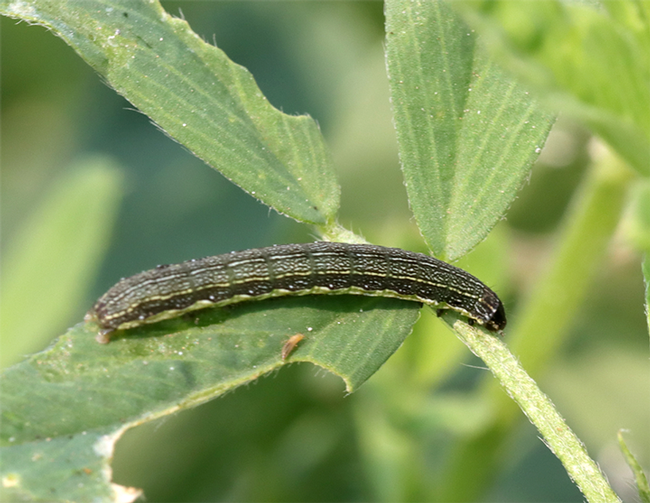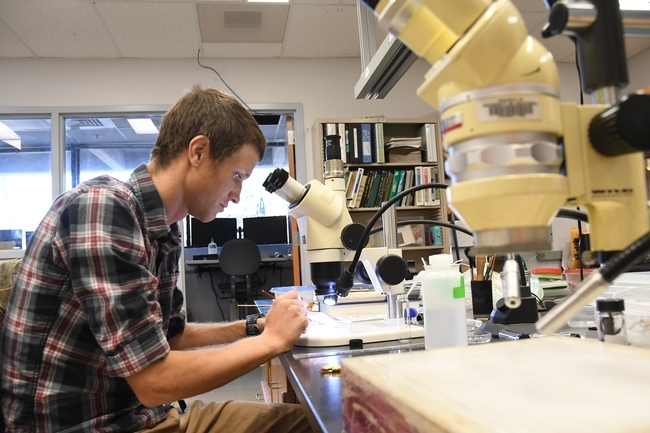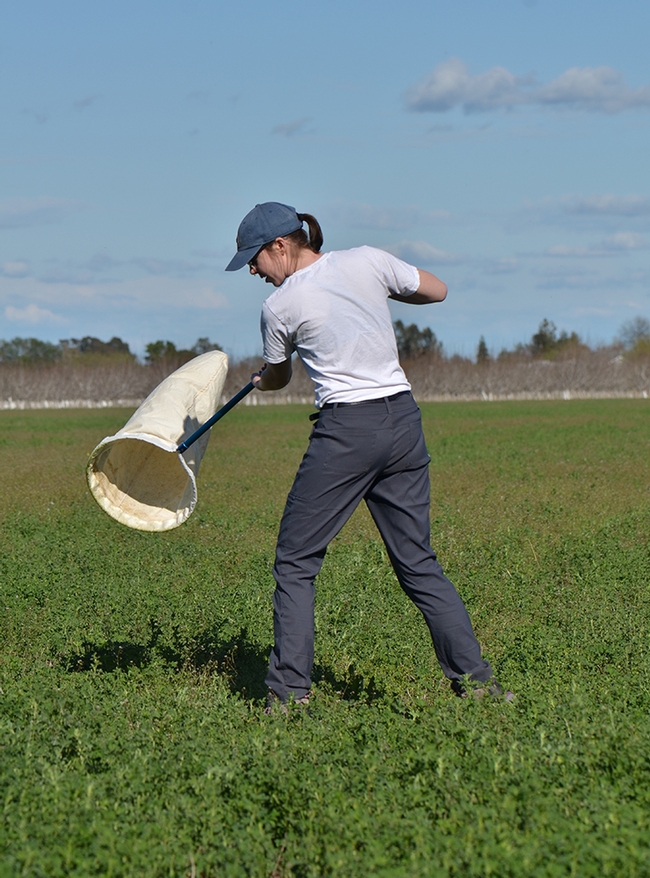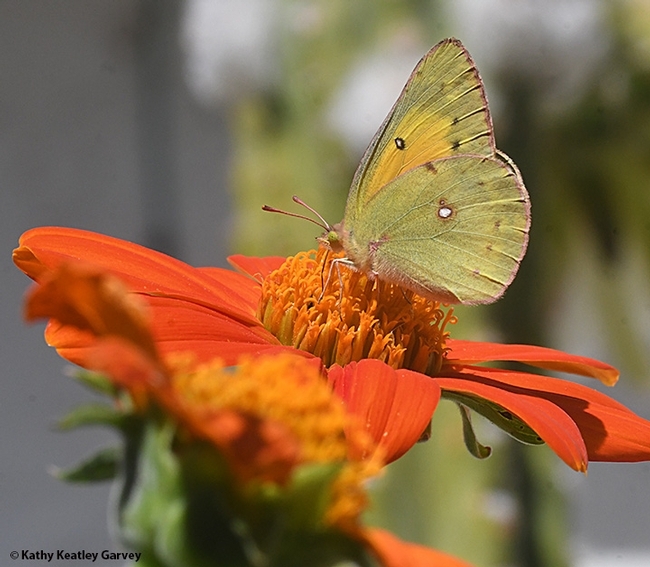
The Bohart Museum of Entomology at the University of California, Davis, is hosting a virtual open house dealing with alfalfa and rice.
Cooperative Extension agricultural specialist Ian Grettenberger, assistant professor, UC Davis Department of Entomology and Nematology, and his graduate student, Madison "Madi" Hendrick, will discuss the crops, the pests, and the natural enemies or beneficials at a virtual Facebook live session from 11 a.m. to noon, Thursday, Oct 22.
Yes, this applies to you. If you're a scientist or would-be scientist, you'll want to know more about these agricultural crops and the issues. If you're a consumer and like rice and ice cream (dairy cows eat alfalfa and milk comes from ice cream, you have a stake in this.
The event, "The Good and the Bad: Insects and Other Arthropods in Agriculture, with a Focus on California Rice and Alfalfa," will be live-streamed on the UC Davis Bohart Museum of Entomology's Facebook page. (Link to Facebook live here). Grettenberger and Hendrick will present short talks and then field questions. No personal Facebook account is required to join the session, which is free and open to the public.

"I will be discussing some of the insect (or arthropod) problems faced by growers of rice in California and some of the challenges in managing them, Grettenberger said. "In rice, some of the key arthropod pests are tadpole shrimp, which can turn what would have been a lush stand if rice into a poor stand with a lot of floating seedlings. Meanwhile, later in the year, armyworm caterpillars, the larvae of a moth, can chew on rice leaves and destroy plants. I'll discuss some of the ongoing work to better understand and manage these pests."
Grettenberg's fields of expertise include field and vegetable crops; integrated pest management; applied insect ecology, and biological control of pests. (See Spotlight on Ian Grettenberger.) Among his current grants:
- Protection of rice from invertebrate pests
- Insecticide resistant alfalfa weevils in the western United States: Quantifying the scope of resistance and implementing a plan to manage the threat?
- Management of key cotton arthropod pests with insecticides and acaricides, a proactive approach to prepare for the invasion of the tomato leafminer (Tuta absoluta) into California
- Detection, biology and control of the exotic Swede midge (Contarinia nasturtii) for California cole crops
- Management of the western spotted and striped cucumber beetle in melon production
- Biological control of the bagrada bug
- Insecticide resistance monitoring and evaluation of efficacy of current chemical tactics for managing aphids and thrips in lettuce

What sparked his interest in entomology? "I had biologist parents, and was drawn into entomology at a pretty young age," Grettenberger said. "I spent plenty of time looking in flowers and turning over logs looking for insects. Once I started thinking about going to graduate school for entomology, I decided to focus on the intersection of agricultural entomology and insect ecology. I wanted to work on applied issues in entomology."
Hendrick, a second-year graduate student in the Grettenberger lab, received her bachelor's degree in iInternational studies at North Carolina State University, and also spent a semester at Nagoya University in Japan (she minored in Japanese).
"I got my start in entomology completely by chance!," Hendrick related. "I needed a science credit and happened to pick a class called 'Insects and People.”' That class really helped me to reframe the way I thought about insects and appreciate what interesting little critters they are. Through that class, I was also able to get a job as an undergraduate assistant in an entomology lab. I worked in a specialty crops lab, where I developed interests in integrated pest management and invasive species. I now study insecticide resistance in the alfalfa weevil, and I'm excited to share what I've learned through this outreach event!"
Grettenberger, Yolo County Farm Advisor Rachael Freeman Long and Madi Hendrick recently wrote a piece in the UC Agricultural and Natural Resources (UC ANR) blog, Alfalfa and Forage News, "A (Virtual )Update on Worms, Weevils an Aphids in Alfalfa."
"This year, the Kearney Research and Extension Center Alfalfa and Forage Field Day went virtual," Grettenberger wrote. "Attendees did not get the chance to look out over lush fields of alfalfa or towering plantings of sorghum, but they get did an update on ongoing work in alfalfa and other forages. Our team put together a rapid-fire video to discuss what are typically the key insect pests in California alfalfa: summer worms, alfalfa weevils, and aphids."
The summer worms in alfalfa include the summer worms: Western yellowstriped armyworm, beet armyworm and alfalfa caterpillar. Another key pest is the alfalfa weevil. The trio also discussed aphids and their natural enemies, including lady beetles, aka ladybugs).
Pests of rice include armyworms, aster leafhoppers, crayfish, rice leafminers, rice seed midges, rice water weevils and tadpole shrimp.
The Bohart Museum, directed by Lynn Kimsey, UC Davis professor of entomology, is located in Room 1124 of the Academic Surge Building on Crocker Lane, UC Davis campus, but is temporarily closed. The museum houses nearly eight million insect specimens; a live "petting zoo" of Madagascar hissing cockroaches, walking sticks and taranatulas; and a gift shop stocked with insect-themed T-shirts, books, posters, jewelry, candy and insect-collecting equipment. (Gift items can now be shipped during the closure.)
More information on the Bohart Museum's virtual presentation is available on its website or by contacting Yang at tabyang@ucdavis.edu.
Resources:
- Alfalfa and Forage News: A (Virtual) Update on Worms, Weevils and Aphids in Alfalfa (By Ian Grettenberger, Rachael Freeman Long and Madi Hendrick, Sept. 20, 2020) (See video on same page)
- Alfalfa and Forage News: Natural Enemies Are Important for Control of the Aphid Complex in Alfalfa--A Case Study (By Ian Grettenberger, Rachael Freeman Long, Daniel Putnam and Rob Wilson, April 7, 2020)
- UC Statewide Integrated Pest Management Program: How to Manage Pests of Alfalfa
- UC Statewide Integrated Pest Management Program: Insects and Other Pests of Rice
Attached Images:

Cooperative Extension specialist Ian Grettenberger at work in his lab at UC Davis. (Photo by Kathy Keatley Garvey)

Graduate student Madi Hendrick sweeping an alfalfa field for pests.

In its adult form, the alfalfa butterfly is attractive. In its larval form, it's a pest of alfalfa. (Photo by Kathy Keatley Garvey)